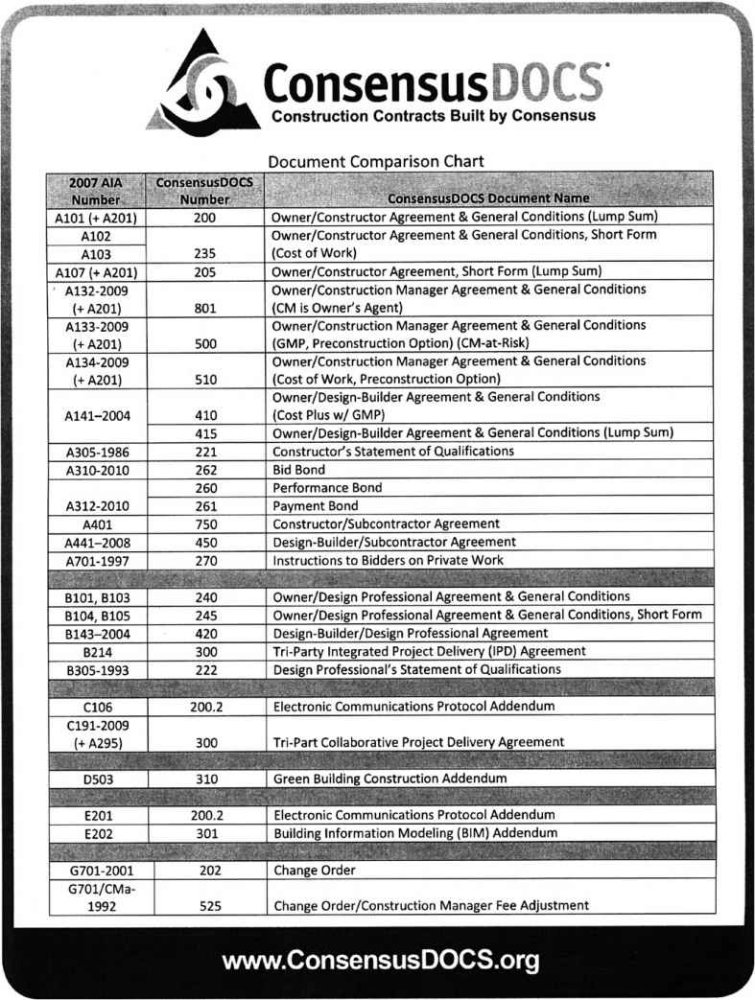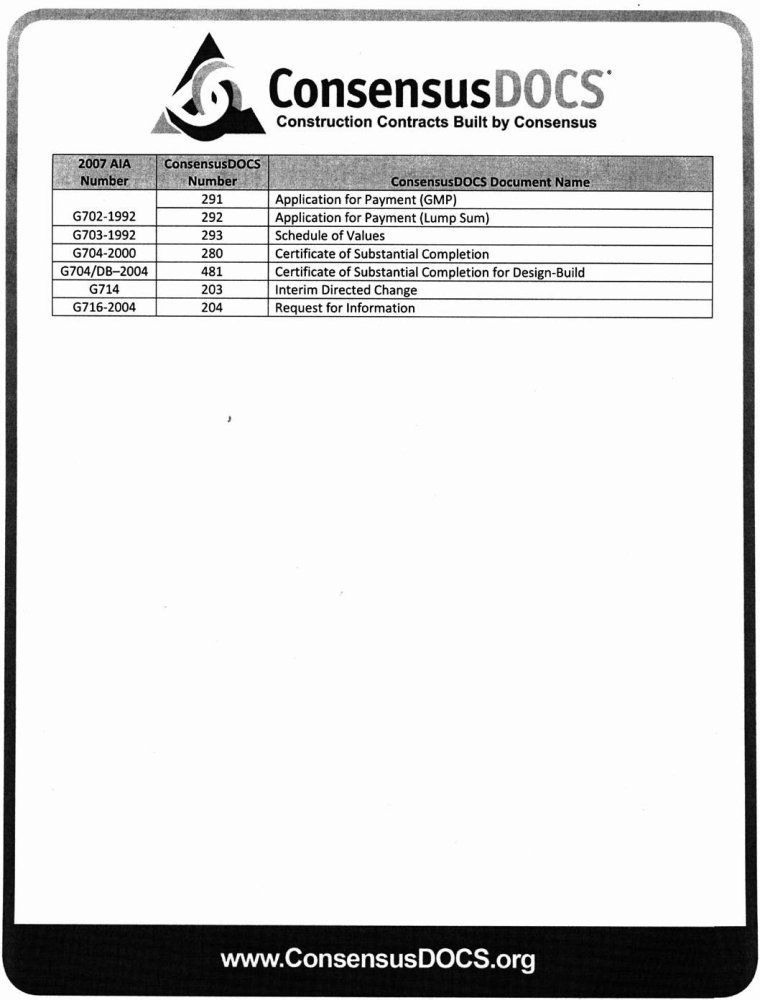A comparison of certain articles from AIA A201™ and ConsensusDOCS® reveals some basic differences and similarities.
The ConsensusDOCS® Concept. The ConsensusDOCS® contract approach is founded, much like the AIA concept, on a collaborative approach among owner, design consultants, general contractor, and key subcontractors. Selected provisions of ConsensusDOCs®300 illustrate this “working together” environment.
ConsensusDOCS® 300—Tri-Party Collaborative Project Delivery Agreement
Article 3—Collaborative Principles—This article creates the Collaborative Project Delivery (CPD) Team consisting of the Owner, Design and Constructor representatives who sign Joining Agreements that provides authority to a Management Group (fully described in Article 4).
Article 3 includes an option to limit the designer’s and contractor’s liability (including the cost of damages, negligence, and breach of contract arising out of the agreement) in an amount not to exceed that which has been established by the CPD Team, unless such claims are reimbursed by the insurance policies carried by the corresponding parties.
Article 4—Reference to management by the group established in Article 3 is elaborated on here. This management group, consisting of representatives from the owner, the design consultants, and the contractor, will conduct regular meetings to review the project’s status and issues affecting progress or delays and conflicts that may result in potential claims.
Article 6—This article deals with development of design and collaborative pre-construction services. This provision dictates that the design services, working collaboratively with the CPD Team, will develop design, quality, costs and schedules jointly. The article encourages, but does not require, the utilization of Building Information Modeling (BIM); however, ConsensusDOCS® 301 is an addendum that adds the BIM requirement. Provisions in DOCs 300 include development of “Target Value” produced by the constructor, key trade contractors, vendors, and design consultants who are also charged with continually seeking savings by identifying options to improve constructability and functionality.
Article 7—Project Planning, in this article, includes several processes that affect planning; one of them is “pull planning,” a schedule approach that looks at preceding activities that are not to be started sooner than is necessary to allow for the continuous performance of subsequent activities. The CPD Team is to develop a Make-Ready Look Ahead Plan and schedule weekly meetings to review and evaluate the work performed as well as the work planned for the coming week.
Article 8—The Construction Budget is addressed in this article, which requires the budgeting process to be an ongoing activity. The updating of costs as design develops commences with a preliminary cost model, proceeds to a schematic cost model, a design development model, and finally a construction document cost model.
Article 12—Trade contractors, subcontractors, suppliers, and design consultants are discussed in Article 12; this article aims to bring trade contractors and suppliers into the design process at an early stage so they can provide their experience and expertise in this key stage of project development. These trade contractors are also required to participate in coordination activities to ensure that conflicts and routing problems are eliminated, or at least dramatically reduced. Article 23—This section is entitled “Dispute Resolution.” Direct discussions among members of the CPD Team and the Management Group are required to resolve disputes or disagreements early on. Dispute mitigation allows for two options: selection of a Project Neutral or a Dispute Resolution Board (DRB) to settle disagreements. Mediation would follow if these two approaches fail; if mediation doesn’t work, binding arbitration or litigation would be the final approach.
Many of the concepts relating to collaboration—that is, working together toward a common goal—set forth in this ConsensusDOCS® contract, as well as those in the AIA Integrated Project Delivery contracts, could be introduced into any standard owner-contractor contracts. The Project Manager and Project Superintendent could introduce several of the collaborative-type provisions into their standard operating procedures even without formal contract provisions, since they stress the need for and advantages of working together as a team.
ConsensusDOCS® 301—Building Information Modeling (BIM) Addendum addresses the implementation of this multidimensional design concept. Although it is a required attachment to an IPD-type contract, it can be attached to other contract formats as well.
A Comparison Chart of AIA 2007 Contract Documents and ConsensusDOCS® Contracts





Post your comment on this topic.